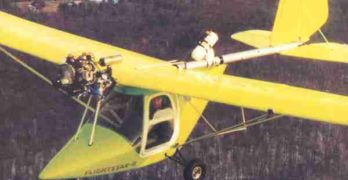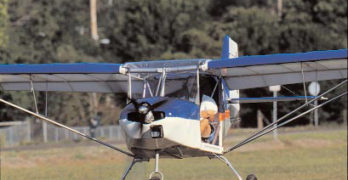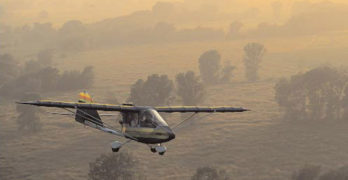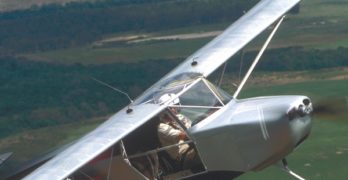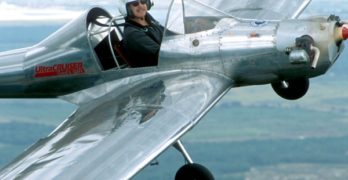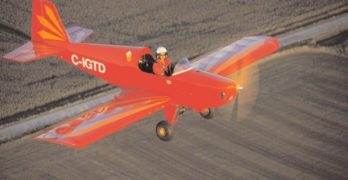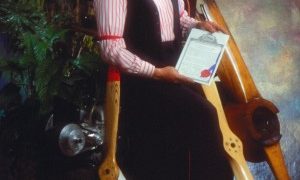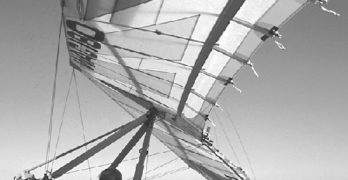ST. PAUL, MINN. — Have you been noticing the change to your magazine? Some pilots have had loud discussions about those changes yet many members have said little (as is common). You’ve been seeing the work of new art directors after a hard push by leaders to spark the magazine’s look and feel. Other major changes are ahead (more next month!) lll Are you ready for the combined magazine? Every other country I can think of has, for a long time, integrated their magazines for hang gliding and paragliding. The USHGA board of directors has worried through this decision with great care (I’ve a had a front row seat). It won’t please everyone; no decision ever does. But it will be the future. s The good news is, art directors Aaron Swepston and Tim Meehan have given each magazines a snazzier look. Most members to whom I’ve spoken seem enthused about the changes.
Search Results for : Revo
Not finding exactly what you expected? Try our advanced search option.
Select a manufacturer to go straight to all our content about that manufacturer.
Select an aircraft model to go straight to all our content about that model.
Product Lines – February 00
ST. PAUL, MINN., — Bits and pieces are floating around in the aftermath of a new millennium and celebrations of grand style around the globe. It’s a good time of year to catch up on details before a new contest and soaring season begins. ••• Why did Aeros name their new rigid wing, "Stalker?" Aeros is the maker of the Stealth topless hang glider, which has achieved amazing U.S. market penetration. To explain the choice of names for their new rigid glider — which conjures a negative image for many Americans — Aeros identified "Roadside Picnic" as a popular novel with a mystical theme. In the book "Stalker" is the main character, idealized as "Neither hunter nor militarist, he’s just trying to survive, to understand, to learn… fearless and courageous, a pathfinder, an explorer, looking for happiness." OK, very positive and perhaps very appropriate for a new high-perf glider, but the name is still odd for American consumption.
Flightstar Inc. — Flightstar II + HKS Engine
Daring to take on deeply entrenched Rotax, Flightstar/H-Power has introduced the first light aviation four-stroke engine to see broad acceptance. Joined with their smoothly contoured Flightstar II, you can have a deluxe ultralight or lightplane that will provide years of flying enjoyment.
While two strokes do the job for most ultralight enthusiasts, the four stroke 700E engine from HKS of Japan offer assurances some pilots demand. With its particular strength of mid-range torque, the HKS engine brings interesting differences. Pull up the nose while revolutions are set in the 4000s and the HKS will haul the Flightstar II aloft with no evidence of prop loading common among two stroke engines.
Flightstar still sells lots of their very popular IISL models, but on this lighter aircraft, they recommend the Rotax 503. However, now that the same company has adapted the stronger HKS engine, sales are soaring for their Flightstar II with its beautifully formed all-fiberglass cockpit enclosure.
Sky Ranger
The Leading Trainer in French Flight Schools
To many observers, the Sky Ranger looks like a RANS Coyote. Based on general appearances, it appears the French light plane borrowed heavily from the popular model sold by the Kansas light plane kit leader. But, Sky Ranger importer Richard Helm bristles a bit when he hears that statement and retorts, “People compare the Sky Ranger to the RANS Coyote. They say it’s a knockoff, but the French designer didn’t take anything from the Coyote. It’s built completely different,” although he admits, “It does look a lot like the Coyote.”
Give a Yankee welcome to the Sky
Ranger. The French-designed
ultralight is typical of a trend I
think we’ll be seeing with increasing
frequency—imported light planes from
Europe. Sky Ranger is built in the
Ukraine by Aeros, Ltd. I visited this
factory with Phil Lockwood of
Lockwood Aviation in the spring of
2001. Once built by Synairgy in France,
Sky Ranger production moved to this
former eastern-block country in 1997.
Hawks and their History
A look at CGS Aviation and its Roots
The Hawk and Chuck. Chuck
and the CGS Hawk. They are
absolutely intertwined. While
Chuck has a wife, Pixie (aka Nancy),
and family—four sons (Chuck Jr.,
David, Ted, and Don)—he has
another family in his aircraft.
Going Way Back
Our story this month takes us back
in time. EAA recently celebrated the
induction of Michael Sacrey into the
Ultralight Hall of Fame. He was
present near the beginning of the
movement. But even before
ultralights were officially recognized
as a segment of aviation, Chuck was
doing essentially what he is doing
today—selling flying machines.
In the early days, Chuck built
hang gliders, with names like the
Swooper, Spitfire, and Falcon (models
I through VII). While hang gliding
was most popular on the West Coast
and many major hang glider
manufacturers were located there,
hang gliding was also popular along
the dunes of the Great Lakes, and
Chuck’s operation was one of the
biggest in the eastern part of the
country.
An Escapade Just for You
Engineering design is usually an evolutionary process. While occasionally a breakthrough idea comes to market, most development in aviation is a result of small steps. The Escapade is a good example.
Once Flying K Enterprises (now Sky Raider LLC) offered their Sky Raider. The single-seater had much in common with the immensely popular SkyStar Aircraft Kitfox. In fact, when SkyStar offered their Kitfox Lite single-seater, Flying K built the welded fuselage for them.
Then came the Sky Raider II with a tight back seat that could be used for an occasional ride though not instruction as no controls were installed in the rear. The new Summit offered by Just Aircraft late last year was a variation on the Sky Raider II theme.
Company leadership changes as do their designs and the path from Flying K to Just Aircraft is convoluted; other business names are involved. By example, Rocky Mountain Wings, run by former Flying K partner Stace Schrader, offers their very similar Ridge Runner.
Long-Lasting UltraCruiser Fun Plane
A Gift of Design
The UltraCruiser was born under rather unusual circumstances. Its designer, Morry Hummel, was not a young engineer with a passion for flying ultralights. On the contrary, Hummel is one of aviation’s pioneers with many years of experience. His story identifies how he found the time to create the UltraCruiser and, in particular, why the ultralight is fully named UltraCruiser, God’s Gift.
Hummel wrote, “I crashed my miniMAX on July 19, 1995. I lost my right leg below the knee, my left leg was badly broken, and my face crushed. My teeth were wired shut for 10 weeks and I was fed through a tube in my stomach.
“While I was in the hospital for 5 months, I had time to think. God had spared my life for a reason. The UltraCruiser is named God’s Gift because I am only 85 years young and flying again.”
I found it an inspiring story.
Murphy Aircraft Returns to Its Roots
After ever-bigger Rebels, the JDM – 8 is a genuine ultralight
Darryl Murphy’s commitment to
small plane design is evident
by the fact that during the
years when Murphy Aircraft Mfg. exhibited
in two locations at various
fly-ins, Darryl frequently was seen
working his company’s booth in the
ultralight area. Other Murphy Aircraft
staff members would be working the
Rebel/Super Rebel booth. At the Northwest
EAA Fly-In in Arlington,
Washington, this past summer, that
pattern re-emerged; the boss stayed
with the JDM-8 in the ultralight exhibit
area. In my conversations with
him, he seemed pleased to be presenting
a genuine ultralight again.
Those who know the history of
Murphy Aircraft before the first Rebel
arrived won’t be surprised to see the
company marketing an ultralight.
This Canadian manufacturer was an
ultralight company that expanded
into homebuilts and has achieved success
through their Rebel series. The
new single-seat JDM-8—especially
when contrasted with the huge, radialengine-
powered Moose—shows this
company has not forgotten its roots in
ultralight aircraft.
Chuck’s Patented Reduction Drive?
Chuck’s Patented Reduction Drive?
Back when ultralights were new, most engine/prop combinations were direct drive. General aviation aircraft engines are direct drive. Of course, these run at slower revolutions so the prop speed isn’t excessive. On a high-revving 2-stroke engine, direct-drive props (commonly 36-inch diameters) are spinning so fast the prop tips create a lot of noise.
When I owned and flew a Flight Designs Jet Wing trike back in 1982, that direct-drive Kawasaki 440 engine and prop were so loud my neighbors complained and I had to cease flying except during certain hours.
To the rescue came Chuck Slusarczyk and his invention. The funny thing is, his patent is not for the reduction drive as many think and as this sidebar’s title suggests.
Even before he designed his groundbreaking Hawk, Chuck developed and was the first to use an “ultralight” reduction drive. His early experience was during the days of experimentation of powered hang gliders.
XP Racer
More than one European writer has called the single-seat Air Création Racer “the best ultralight in the world.” That’s a pretty big statement in a world full of wonderful recreational aircraft. Can it measure up? The short answer is, “Yes, very possibly it can!”
The best ultralight in the world? Really? Well, this is too sweeping a statement. No one knows which ultralight is truly the best because best is different for every person. What is best for you may not be best for me.
This very point has crystallized my response to many pilots who ask me at airshows, “You’ve flown everything. What should I buy?” I can’t answer the question because I don’t know what you want. Only after a lengthy conversation and watching you fly could I even hazard a guess about the best ultralight for you. Even then, it’s too likely I’d be wrong.
Nonetheless, some aircraft are clear winners and others aren’t so strong.


